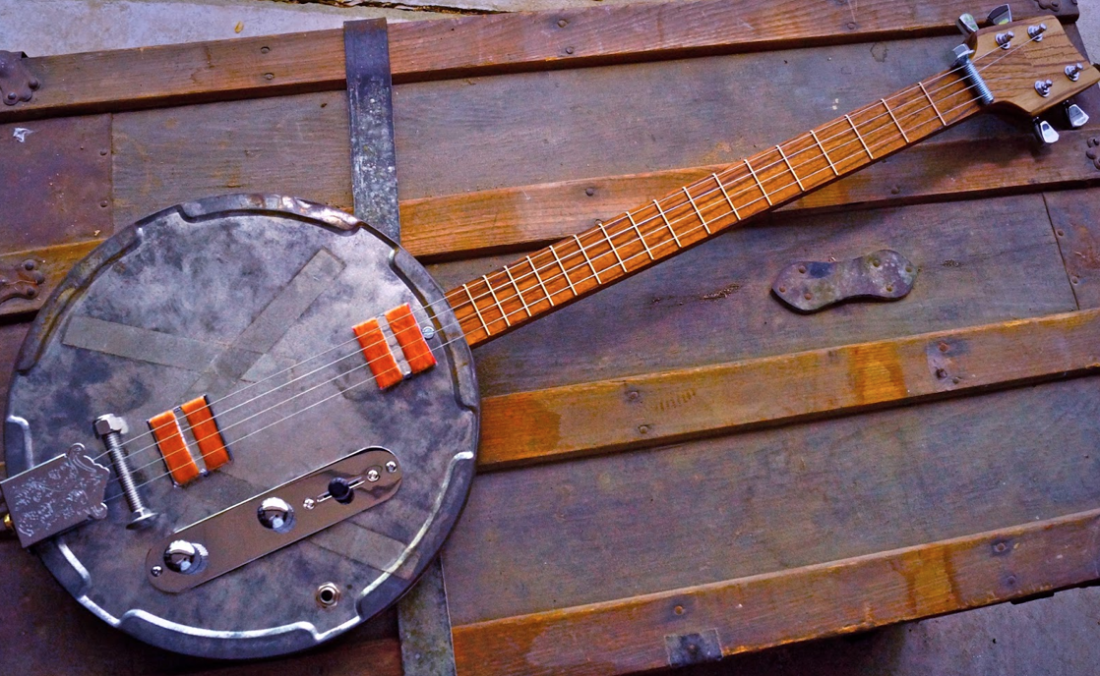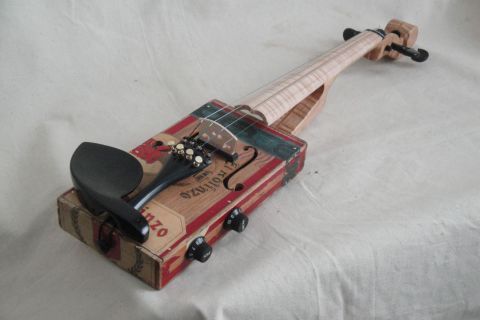Many of us view banjos, violins, drums and flutes as quasi-utilitarian musical instruments. But a new show opening Friday, Jan. 16, at the Asheville Area Arts Council has elevated their status to that of individual works of fine art. Buncombe Built, which was organized and curated by Asheville vocalist Linda Go and musician, producer and AAAC board member Gar Ragland, features an array of musical instruments designed and handmade in Buncombe County.
The exhibition is part of the AAAC’s Point of View curatorial series and is an extension of a one-night-only concert that Go organized for the AAAC’s Creative Sector Summit in March 2014. Go’s performance, under the same title, featured a dozen musicians discussing, showcasing and playing instruments that they had engineered and built. “Those of us who were able to see Go’s piece were really struck by the works and the maker’s processes,” says Kitty Love, AAAC’s executive director. “This show is continuing on that theme.”
The exhibition, much like the concert, features homegrown instruments from seven Buncombe County musicians (four took part in the original show) and makers. Go selected the artists from her own niche in Asheville’s music scene — she’s either performed with or organized shows for the participating musicians. Ragland has arranged and displayed a series of accompanying video screens and audio streams that allow viewers to both see the musicians’ creative processes and listen to the final products.
The instruments themselves range from traditional to experimental, wood to steel and stringed to percussive. “It’s the blending, the perfect synthesis of roots and contemporary culture,” says Love.
Djembes by Billy Zanski, owner of Skinny Beats Drum Shop, show alongside branch flutes by Geri Littlejohn, found-object drums by Billy Jonas and Saraz handpans by Mark Garnier. Handpans are a relatively new type of musical instrument, first developed in 2000. They look like small UFOs and sound like a steel drum, but with deeper and softer reverberations. Garnier founded Saraz Musical Instruments in Asheville in 2012. In three years, his instruments have garnered worldwide acclaim within the handpan community, resulting in a nearly two-year waitlist for orders.
Patrick Heavner, of the Pisgah Banjo Co., taps into the exhibit’s Southern Appalachian music heritage with his handmade open-backed five-string banjos. Heavner and co-owner Topher Stephens founded the Pisgah Banjo Co. in Fairview in 2012 with the goal of using native Appalachian hardwoods. Their instruments are now available all over the Eastern Seaboard, from Black Mountain to Nashville, Tenn., and Brattleboro, Vt.
Other pieces, specifically those of Bill Raddatz (aka Billy Radd) and Steve Miller, carry that Appalachian legacy but take creative departures from traditional means and modes. Miller makes cigar box violins. They’re decorated with import stickers and stamps, logos and f-holes where one would expect the smooth Stratavarian ripples of toned wood.
Raddatz, meanwhile, offers up two of the show’s most unique instrumental hybrids: a license plate guitar and a “canjo.” The instruments look like and sound like banjos, but are strung and played like guitars. The difference is in the bodies: one body is made from two license plates bolted together, the other uses old film canisters — hence the name canjo.
Raddatz has been making these hybridized instruments since moving to the area in 2010. The idea came to him after seeing a cigar box guitar. “I had all these film cans that I’d carried halfway across the country from Washington,” he says. “There were Kodaks and other kinds, all still with their labels on.” Each canister had a unique patina left from decades of finger prints and labels, and thus a unique sound. Raddatz’s first creation had three strings and an open tuning similar to a banjo. Later models, he said, had more stings, larger fretboards and were more like Dobros and blues guitars. Each canjo is different from the next.
For Go, such works offer a portrayal of the creativity inherent in the music community. That creativity extends to each of these musicians-turned-artists, for they have all gone beyond the norm, she says. “Music is what I think helps operate the world. It can stimulate people’s imaginations to the point where they see beyond what they can pick up at the music shop.”
WHAT: Buncombe Built
WHERE: Asheville Area Arts Council, ashevillearts.com
WHEN: Opening Friday, Jan. 16, 5 to 8 p.m. The exhibit is on view through Saturday, Feb. 28.






My name is Derek Graziano and I also am part of this exhibit going on at the Asheville Area Arts Council til the end of February.
My display features 2 Hammered Dulcimers that I built from scratch that have crystal bridge pieces under the strings, as well as a guitar that I replaced the bridge saddle(the part that holds up the strings on the soundboard) with a piece of fire agate gem stone. I will be performing and giving a crystal instrument upgrade demonstration on jan 24 and feb 7 at the AAAC in the grove arcade.